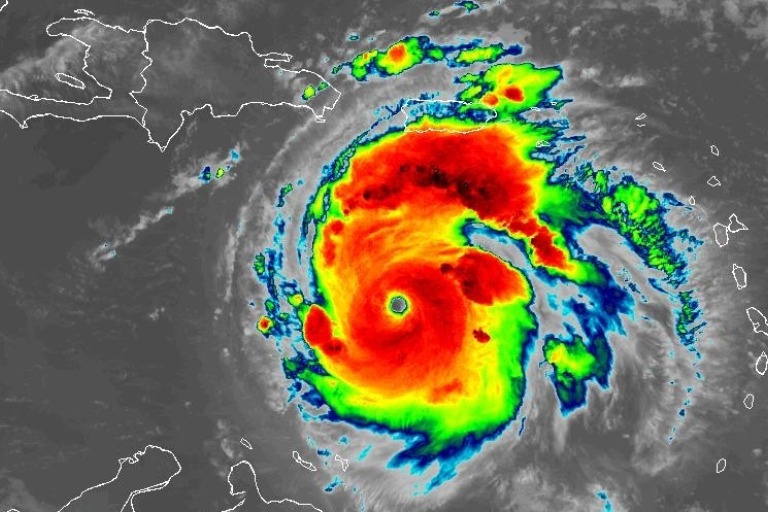The National Oceanic and Atmospheric Administration (NOAA) has released its official outlook for the 2025 Atlantic hurricane season, which runs from June 1 to November 30. Based on advanced forecasting models and historical data, NOAA predicts a 60% chance of an above-normal season, a 30% chance of a near-normal season, and only a 10% chance of a below-normal season.

Forecast Summary
For the 2025 season, 13 to 19 named storms are expected, each with maximum sustained winds of 39 mph or higher. Of those, 6 to 10 could become hurricanes, meaning they would have winds of 74 mph or greater, and 3 to 5 of these could develop into major hurricanes, classified as Category 3, 4, or 5 with winds of 111 mph or higher. NOAA has stated a 70% confidence level in these projections.
These estimates reflect the latest climate science and incorporate findings from NOAA’s Climate Prediction Center, National Hurricane Center (NHC), and other divisions within the agency.
Scientific Factors Behind the Forecast
Several key climate indicators are contributing to this year’s above-normal outlook:
-
ENSO-Neutral Conditions: The El Niño-Southern Oscillation (ENSO) is currently in a neutral phase, which neither suppresses nor significantly enhances hurricane activity.
-
Warmer-than-Average Sea Surface Temperatures: Elevated ocean temperatures in the Atlantic Basin can provide more energy to developing storms.
-
Weak Wind Shear: Reduced vertical wind shear makes it easier for storms to intensify and maintain structure.
-
Active West African Monsoon: An increase in tropical wave activity from West Africa often contributes to the formation of long-lived Atlantic storms.
Additionally, NOAA continues to observe high ocean heat content in the Atlantic and reduced trade winds—both of which support storm development and persistence.
Enhanced Forecasting Tools and Capabilities in 2025
In 2025, NOAA will implement several technological improvements aimed at enhancing hurricane monitoring and communication:
-
Hurricane Analysis and Forecast System (HAFS) Upgrade: The primary hurricane modeling system will see an upgrade that is expected to improve both track and intensity forecasts by approximately 5%.
-
Extended Forecast Windows: NOAA’s hurricane centers will now issue tropical cyclone advisories up to 72 hours in advance of possible storm surge or tropical-storm-force winds reaching land, offering communities more time to prepare.
-
Expanded Tropical Hazards Outlook: The Global Tropical Hazards Outlook, produced by NOAA’s Climate Prediction Center, will now extend to three weeks, offering earlier insights into potential tropical cyclone formation.
Outreach and Communication Updates
NOAA’s National Hurricane Center will introduce or continue offering several public communication tools during the 2025 season:
-
Spanish Language Products: Key public advisories and updates, including the Tropical Weather Outlook and Cyclone Discussion, will be provided in Spanish to improve accessibility.
-
Enhanced Forecast Graphics: An experimental version of the forecast cone graphic will display inland tropical storm and hurricane watches and warnings, with new visual indicators showing overlapping hurricane and tropical storm alerts.
-
Rip Current Risk Maps: When an active tropical cyclone is present, the NHC will publish maps indicating coastal areas at risk for rip currents, supported by data from local Weather Service offices.
Data Collection and Research Innovations
For 2025, NOAA is advancing hurricane research through new airborne and oceanic monitoring technologies:
-
ROARS Radar System: NOAA’s hurricane hunter aircraft will be equipped with an experimental Radar for Ocean and Atmospheric Remote Scanning (ROARS) system. This technology will help scientists better understand storm intensity and ocean conditions beneath hurricanes by collecting real-time wave and wind data.
-
Probabilistic Precipitation Portal: The Weather Prediction Center will offer an interactive tool for assessing rainfall and flash flood probabilities up to three days in advance, improving early warning and disaster planning capabilities.
Preparedness Emphasis
NOAA leaders are strongly encouraging the public to take early preparedness steps. According to Ken Graham, Director of the National Weather Service, the combination of more accurate models and extended forecast lead times allows communities to make informed decisions ahead of storms. Emergency kits, evacuation plans, and awareness of local alerts are key to minimizing the risks during hurricane season.
The Acting NOAA Administrator, Laura Grimm, also emphasized the importance of inland awareness. In recent years, storms have caused significant flooding far from coastal areas. For example, in 2024, Hurricane Helene brought over 30 inches of rainfall to parts of North Carolina, leading to major flood events.
2025 Atlantic Hurricane Name List
NOAA follows the naming conventions set by the World Meteorological Organization. The list of 2025 Atlantic hurricane names is available on NOAA’s website at hurricanes.gov.
Regional Outlooks
In addition to the Atlantic basin forecast, NOAA also provides seasonal outlooks for the Eastern Pacific and Central Pacific hurricane regions. These projections are developed in partnership with other NOAA agencies and updated as necessary based on changing atmospheric and oceanic conditions.
Next Update Scheduled
NOAA’s Climate Prediction Center plans to issue an updated 2025 hurricane season outlook in early August, just ahead of the climatological peak of the season, which typically occurs between mid-August and late October.
Conclusion
The 2025 Atlantic hurricane season is shaping up to be potentially more active than usual, according to NOAA’s latest data. With 13 to 19 named storms and the possibility of up to 5 major hurricanes, staying informed and prepared is more important than ever. Thanks to ongoing advancements in forecasting technology and NOAA’s commitment to public safety, communities have more tools and time to prepare for tropical weather threats.
To stay updated throughout the hurricane season, visit www.noaa.gov and www.hurricanes.gov for the latest advisories, forecasts, and preparedness resources.
Sources:
-
NOAA.gov – 2025 Hurricane Outlook
-
National Hurricane Center
-
Climate Prediction Center

